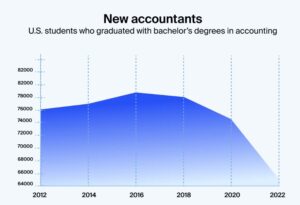Bookkeeping data entry can be a daunting task, but it doesn’t have to be. With the right strategies and tools, you can streamline your process, avoid common mistakes, and ensure your entries are accurate. In this article, we’ll explore practical tips and insights to help you master bookkeeping data entry, making it more efficient and less stressful.
Key Takeaways
- Using templates can save time and reduce errors.
- Automating repetitive tasks can enhance efficiency.
- Regularly reviewing your entries helps catch mistakes early.
Streamlining Your Bookkeeping Data Entry Process

Before you even lift a finger, think about how you can make each keystroke count. Right off the bat, set up your workspace with a mindset to keep things simple and smart – like when you decided to try that new bookkeeping tactics strategy and it saved you a ton of hassle.
Embrace the Power of Templates
Templates are your new best friend. Instead of starting from scratch every single time, you can reuse formats designed to catch every detail. Imagine having a checklist that reminds you to record all the daily expenses, sales, and even those pesky bank fees. Using templates can shave hours off your work and stop mistakes dead in their tracks.
Here are a few quick benefits of setting up templates:
- Consistent data entry every time you log an entry
- Faster completion of routine tasks
- Less chance of forgetting important fields
Automate Where You Can
Now that you’re set up with templates, look at the tech around you. Automating recurring tasks can really clear up your day. When your software can fill in details automatically, you can focus on the parts of bookkeeping that really matter – or at least give yourself a well-deserved break.
Consider these automation ideas:
- Scheduled batch uploads of transactions
- Automated error-checking features
- Integration with bank feeds to minimize manual input
Remember, a bit of automation can go a long way in keeping things smooth and error-free.
Organize Your Digital Workspace
A tidy digital workspace creates a tidy mind. Create folders, use clear file names, and maybe even set up a routine to back up your data monthly. To keep the chaos at bay, here’s a simple table that can help you outline your organization strategy:
| Task | Benefit | Tip |
|---|---|---|
| File Organization | Easy retrieval of records | Use logical folder names |
| Regular Backups | Safe against data loss | Schedule monthly backups |
| Digital Clean-up | Reduce clutter and errors | Delete outdated files |
Keep your digital ledger as clean as your desktop – a little organization today saves a lot of confusion tomorrow.
By using a blend of smart templates, prudent automation, and a well-organized digital environment, you’ll transform your everyday bookkeeping routine into a process that’s fast, accurate, and surprisingly stress-free.
Common Pitfalls in Bookkeeping Data Entry
Keeping your bookkeeping records on point might seem like a no-brainer, but often it hides a few common traps. Let’s break down some major pitfalls you need to watch out for:
The Dangers of Multitasking
When you try to juggle multiple tasks at once, your focus splits faster than a dropped stack of receipts. You might think you’re saving time, but here are some ways multitasking can backfire:
- Missing small details that add up to big errors
- Mixing up numbers because your mind is on several things at once
- Taking longer to finish tasks because you’re switching contexts constantly
Constant task switching can turn an easy job into a messy one. Remember, your attention is a limited resource, and splitting it too much will cost you accuracy.
Ignoring Data Validation
Skipping checks because you’re in a hurry is a recipe for future headaches. When you bypass data validation, it’s a bit like ignoring a smoke alarm; you might not see the problem right away, but it’s ready to blow up later. Here’s what might happen:
- Incorrect figures slip into your system
- Inconsistencies that are hard to track down later
- Stress when reconciling all the numbers at the end of the month
Make it a habit to verify your entries as you go. A quick double-check can save you from the nightmare of chasing errors that could even mess with Tax Compliance issues down the road.
Skipping Regular Reviews
Let’s be real: if you leave your data unchecked for too long, what you’ve built could crumble like a house of cards. Regular reviews aren’t just busywork – they catch the tiniest mistakes before they grow into full-blown disasters. Consider these points:
- Errors accumulate over time, making them tougher to correct in bulk
- A once-over might reveal patterns of mistakes that need addressing
- Routine reviews keep your records fresh and give you peace of mind
Below is a quick glance at what can happen if you skip these reviews:
| Issue | Consequence | Tip |
|---|---|---|
| Overlooked typos | Data mismatches and rework | Review entries daily |
| Misclassified entries | Confusing records, potential fines | Use checklists for accuracy |
| Systematic errors | Inaccurate financial reporting | Schedule weekly audits |
Regular reviews are like a mini tune-up for your financial records. Invest a little time now and you’ll save a lot of trouble later.
Skipping regular checks is a silent killer for your bookkeeping system. Just like using a stale recipe, ignoring reviews means you might end up with a dish that’s not quite right!
Tools to Enhance Your Bookkeeping Data Entry
Choosing the Right Software
When you sit down to enter your bookkeeping data, the right software can save you a world of pain. You don’t need a tool that feels like rocket science—you just need something that gets the job done. Consider searching for a user-friendly program like QuickBooks tools that offers automation features, intuitive dashboards, and real-time reporting. Here are a few things to look for:
- An interface that’s easy on the eyes
- Automation for recurring entries
- Real-time updates that keep your records fresh
Leveraging Keyboard Shortcuts
Ever feel like you’re repeatedly clicking through the same menus? Keyboard shortcuts can be your secret weapon. Instead of wasting time with your mouse, try these common tricks to speed things up:
| Action | Shortcut | Benefit |
|---|---|---|
| Copy | Ctrl + C | Quick duplication |
| Paste | Ctrl + V | Fast data entry |
| Undo | Ctrl + Z | Instant error fix |
It might seem small at first, but once you start using a few shortcuts, you’ll wonder how you ever managed without them.
Utilizing Cloud Storage Solutions
Imagine never having to worry about lost files or corrupted spreadsheets again. With cloud storage, all your data is safely backed up and accessible from anywhere. It’s a great way to keep your work organized and secure. Plus, if you ever need to collaborate, sharing files becomes a breeze. Think about these perks:
- Automatic daily backups that work in the background
- Easy file sharing with team members
- Access to your data on any device, whether at home or on the go
Investing in the right tools now will save you headaches later. Just remember, even a modern setup benefits from a little bit of planning and some keyboard savvy.
Mastering Accuracy in Bookkeeping Data Entry

Keeping your data entry on point isn’t just about punching keys; it’s about making sure what you enter is spot on. Let’s break down some hands-on ways for you to stay sharp and error-free.
Double-Check Your Entries
Before you move on to the next set of numbers, give your work a quick once-over. It might feel like extra hassle, but a little review goes a long way. Here are a few pointers:
- Pause and compare your inputs to the original data.
- Spot-check random entries rather than scanning the whole batch.
- Use built-in tools like auto-correct or built-in data validators when available.
Double-checking now can save you a mountain of headaches later.
Establish a Consistent Routine
Getting into a groove is key when you’re handling bookkeeping data entry. Create a predictable routine—one that breaks your work into manageable segments. This isn’t about being robotic; it’s about developing a system that works for you. For instance:
- Start with a clear workspace and specific task goals.
- Allocate chunks of time to focus solely on data entry.
- Use a timer or checklist to keep you on track.
Having a routine isn’t just about discipline—it keeps your accuracy up and your stress levels down. And if ever you’re in a bind, remember that expert bookkeepers know a thing or two about refining these routines.
Take Breaks to Boost Focus
Spending hours in front of a screen can fog up anyone’s mind. Regular breaks aren’t a luxury—they’re a necessity. Step away from your desk, stretch your legs, or grab a coffee. Then, come back recharged and ready to tackle the next batch of data. Here’s how you might structure your break schedule:
- Work for 25-30 minutes, then break for 5 minutes.
- After a couple of cycles, take a longer break of 15 minutes.
- Use your break to reset: a quick walk or some light conversation can do wonders.
Taking a short break might seem trivial, but it’s the unsung hero of long-term focus and precision in data entry.
By consistently checking your work, setting a steady routine, and making time to recharge, you’re well on your way to mastering accuracy in your bookkeeping data entry. Keep it simple, keep it fun, and don’t let mistakes slow you down!
Wrapping It Up: Your Bookkeeping Journey Awaits
So there you have it! Bookkeeping data entry doesn’t have to be a snooze-fest or a source of endless headaches. With a sprinkle of organization, a dash of patience, and maybe a few snacks (because who doesn’t love snacks?), you can tackle your bookkeeping like a pro. Remember, it’s all about finding your groove and making the process work for you. Whether you’re a small business owner or just someone trying to keep their finances in check, these tips are your trusty sidekicks. So, roll up those sleeves, fire up that spreadsheet, and get ready to conquer your bookkeeping tasks with a smile. You’ve got this!
Frequently Asked Questions
What are some good ways to speed up data entry?
To make data entry faster, learn keyboard shortcuts and practice touch typing. This helps you avoid using the mouse too much. Also, check your data against the source as you enter it to avoid mistakes later.
How can I ensure my data entry is accurate?
To be accurate, take your time and check your work as you go. Don’t rush through it. Double-check your entries to catch any errors before they become a bigger problem.
What tools can help with data entry?
Using software with features like autocomplete and spell check can help a lot. These tools can catch mistakes and make your work faster.







